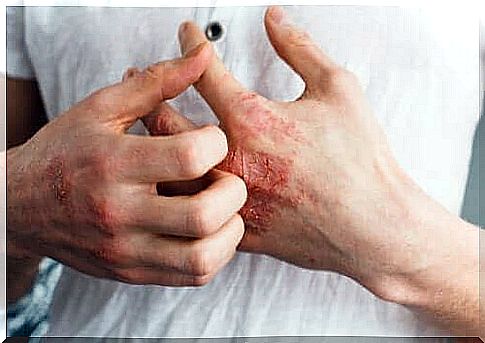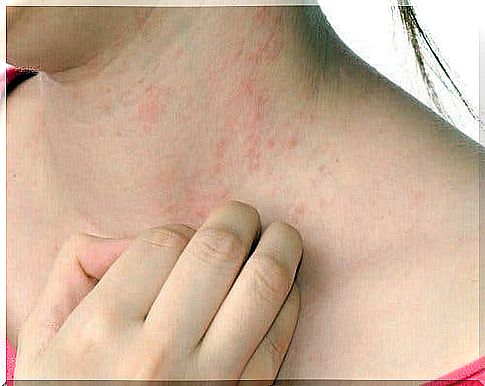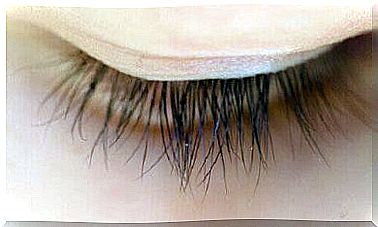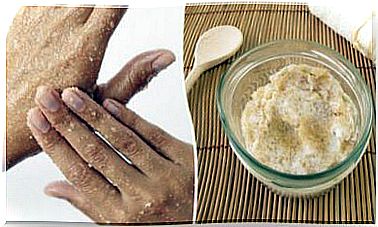What Is Atopic Dermatitis?

Atopic dermatitis, also known as eczema, is a skin condition that causes redness and itching. It is more common in children, but can occur at any age. It is generally chronic, but can also go away for a while and then come back later.
Experts believe that this disease affects about 20% of all children in the world. Although it is slightly more common in the industrialized countries of the northern hemisphere, it occurs all over the world. 3-5% of children with atopic dermatitis will suffer from it until adulthood.
The incidence of this disease is increasing. It is due to the impact of environmental pollution and unhealthy practices. For example, constant stress and poor night’s sleep can make it worse. Although experts have not yet found a cure for this disease, several studies are underway.
What does atopic dermatitis mean?

Atopic dermatitis is a disease that occurs as redness and itching of the skin. Atopic skin is characterized by its dryness. It leads to flaking and irritation, causing disturbing itch-like symptoms. Sometimes it also leads to the appearance of small fluid blisters.
According to the Spanish Pediatric Association, atopic dermatitis can be classified into three groups:
- Babyhood. The disease begins to appear at the age of five months. It occurs mainly on the face, with the exception of the areas around the mouth, nose and eyes. It is also sometimes found on the scalp, ears and palms. It causes constant itching.
- Childhood. Such atopic dermatitis begins at about the age of two years and continues until the age of seven years or adolescence. Although it most often occurs in the elbows and knees, it can also be found elsewhere in the body.
- Adulthood. Such atopic dermatitis occurs after puberty and is characterized by abrasions on the skin. It also mainly affects the back of the palms and the folds of the wrists and legs.
Causes
The causes of this disease have not yet been precisely identified by science. However, we know that several factors can contribute to its onset or its worsening. These factors include:
- Hereditary factors. Experts currently believe that the most common cause of atopic dermatitis is a genetic predisposition. Children of parents with hay allergies are more likely to be at risk for this disease.
- Mother’s age. The older a mother is at birth, the more likely the child will suffer from atopic dermatitis.
- Surroundings. This disease is most common in polluted cities with cold climates. It is also more common in dusty places or places where tobacco has been smoked.
Experts also know that stress and insomnia can trigger this disease. Sweat also seems to have an effect, both with the use of nylon or woolen clothing. This disease usually occurs in people who suffer from food allergies or other types of allergies.
Symptoms and diagnosis

The main symptoms of atopic dermatitis are skin ulcers. They are hard-shelled and reddish in appearance. They are also subject to really intense and prolonged itching. This often leads to mental problems as the itching is very disturbing.
In infants, ulcers are vesicular and exudative. Ulcers look dry, leathery and thick. Ulcers are also skinny in adults and are also really rich or low in pigments. In other words, they either have little or too much color.
People with this disease for an extended period of time have a higher risk of developing cataracts at the age of 20-30 years. Experts do not yet know the reason for this. They are also more likely to develop eczema herpeticum if they get a herpes simplex virus infection.
Doctors can usually diagnose the disease simply by looking at the patient’s skin. Skin assessment and analysis of medical history are usually sufficient to make a diagnosis. Sometimes doctors also do patch tests. However, laboratory tests are rare.
Do you suffer from the symptoms of this disease? If this is the case, you should see a dermatologist as soon as possible. The specialist is responsible for making the correct diagnosis and giving treatment.









